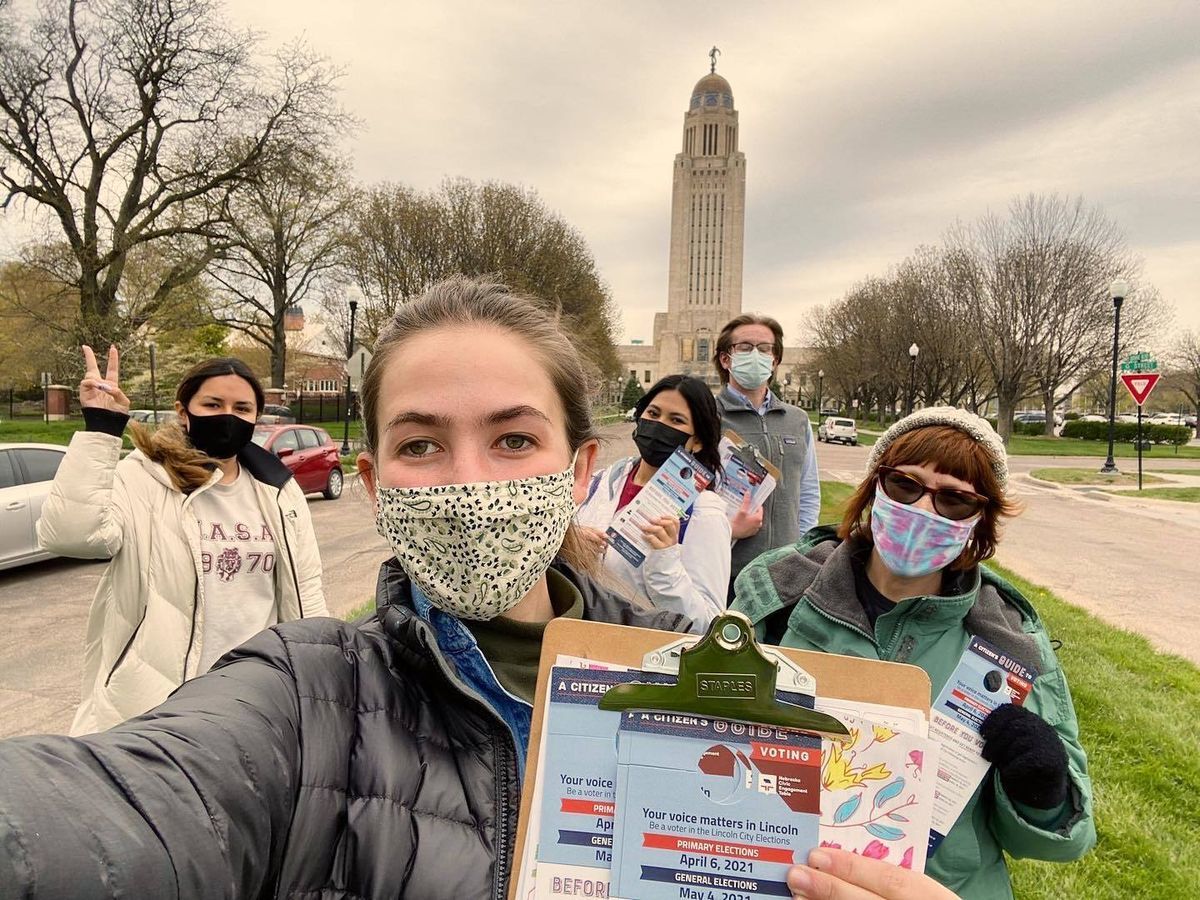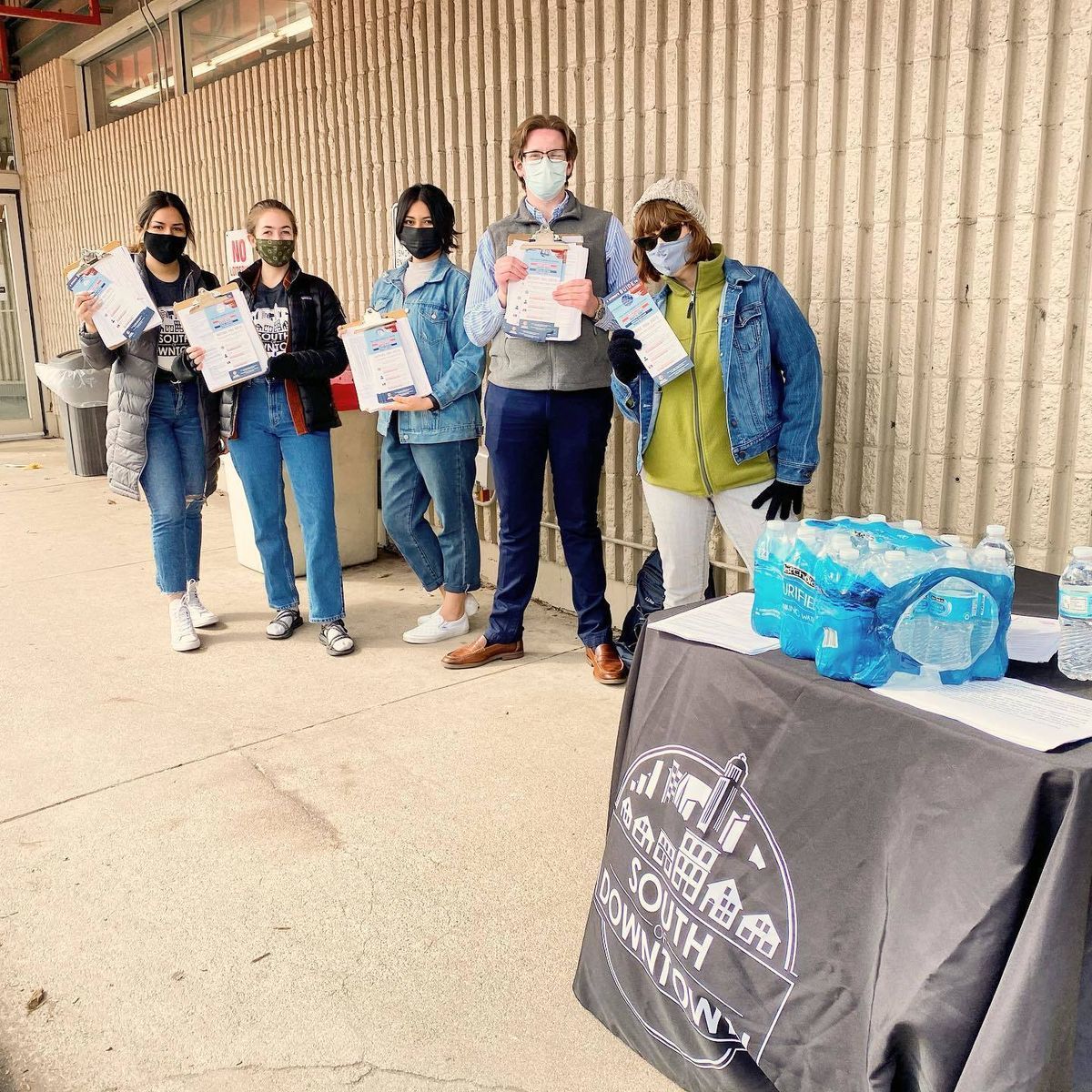Local elections are our chance to make big change right in our communities. For community organizers, the question of how to engage voters can be tricky. Through art, Chueqa Yang and Kat Wiese found new ways to keep the voting conversation going.
CY: Most of the work that I did with South of Downtown was the Civic Sidewalk Series that included creative placemaking and the use of stencils and spray chalk to spray messages all over busy walking areas in the South of Downtown neighborhood before the elections. While we were doing that, we were also tabling and getting folks registered to vote. That was super super fun. I also utilized a mini-grant from the Table to hire canvassers from the neighbor. That helped with a lot of registrations. I also organized Party at the Polls where I hired local musicians from the neighborhood to play during election day and that was very very fun and exciting. I'm happy that I pulled all that off in the spring.
KW: In the spring, we had a neighbor, Michelle Clifford, who did a lot of research on issues in the legislature affecting Black and brown students, thinking about policing and caucusing and etc., and it was really cool. I wanted to support her pop-up, so we brought a bunch of yard signs so people could write messages in solidarity with Black and brown people that are advocating for themselves. We had two pop-ups in the spring. It was cool because we were also registering people to vote during that time and I think seeing some of the solidarity of a message like "Black lives matter" and then knowing that person also wants you to register to vote says like "okay my vote matters as a Black person." I liked that connection that we registered people to vote as we were doing that in support of a neighbor who did all this research and advocating just to inform people, to send their own messages to city council and to different representatives. So they kind of took that space to educate folks to make their own decisions and to write their own messages without telling them what to say, but offering them space to get information on these issues and like, "What is it that you care about?"
I don't think anyone has more stake in a neighborhood than the people that live there. [We] live in the neighborhood where we’re working; I think when you see your neighbor out on your corner advocating for something or trying to get people registered to vote, you're like, "Oh they're talking to me. They care about my vote.” I think it's way more personable. The art, the yard signs, the Civic Sidewalk Series, all these things are invitations that change the culture around voting so that it's something that's celebratory, something that's like a real gift that we get to participate in rather than a labor. That's what Party at the Polls was all about, bringing joy into a space that's sometimes a chore.
CY: When I was working with the local elections in the spring, it was more difficult to get more engagement locally. A lot of the folks here are really just even struggling to survive and that's their main focus. Trying to have neighbors care about local issues and care about voting was very difficult in my opinion. It all really comes back to community and having these folks see your face more often than local officials that are making decisions that impact their livelihood. We don't necessarily see local officials as much as we see community organizers who are actually doing the work and listening intently and building these relationships.
KW: I really care about local elections because I care about what's happening on my block. How do we get the people in our neighborhoods that have the highest need for a city's resources access to them? I think local elections can answer that question. They have the opportunity to answer that question alongside other forms of civic engagement. So that's why I care about local elections. I love art for so many reasons because it's a tool for so many things. It can be a tool for negative change, it can be a tool for positive change, it can be kind of neutral. When we harness it for community action, it can be so inviting and so welcoming for people that wouldn't normally engage in the civic process, but they can engage in art, right? They can do that. It's like a stepping stone and it's a way of bringing joy into spaces that maybe aren't always joyful.
CY: I think back to the Civic Sidewalk Series and how that was very meaningful for me, having this physical, shared space, especially during a pandemic. I feel like community is hard to find virtually. When we were having folks come and chalk spray, I met so many incredible community members and people that I see in the market across my street. They remember my face and doing the chalk spray. That was very fulfilling. I think art is very underutilized and a lot of people don't see the value of it.





